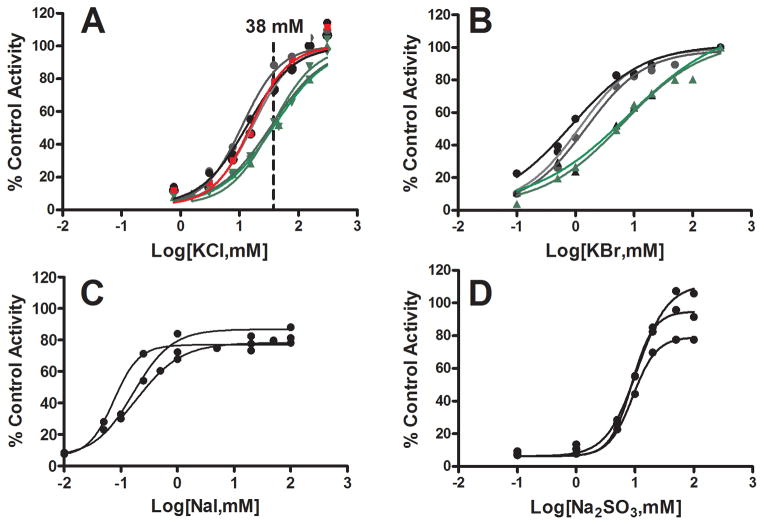Figure 2.
Concentration-dependent effects of chloride, bromide, iodide and sulfite on the extent of inactivation of GSTZ1 activity in human liver cytosol samples during incubation with 0.5 mM Na DCA for 2 h. In all panels, the data points shown are mean values of duplicate determinations in individual cytosol samples and lines are curve fits for each individual. Panel A: Effects of chloride on DCA-induced inactivation of GSTZ1 activity in human liver cytosol samples from three EGT/EGT donors (black circles), three EGT/KRT donors (green triangles) and one EGM/EGM (red square) donor. The concentration range of KCl was 0.77–300 mM; 38 mM, indicated with a dotted line, is the physiological concentration of chloride in liver of adults. Panel B: Bromide attenuation of DCA-induced inactivation of GSTZ1 in human liver cytosol of three EGT/EGT (black circles) and two EGT/KRT (green triangles) samples. The concentration range of KBr was 0.1–50 mM for EGT/EGT samples and 0.1–100 mM for EGT/KRT samples. Panel C: Iodide attenuation of DCA-induced inactivation of GSTZ1 in human liver cytosol of three EGT/EGT samples. The concentration range of NaI was 0.01–100 mM. Panel D: Sulfite attenuation of DCA-induced inactivation of GSTZ1 in human liver cytosol of three EGT/EGT samples. The concentration range of Na2SO3 was 0.1–100 mM.

